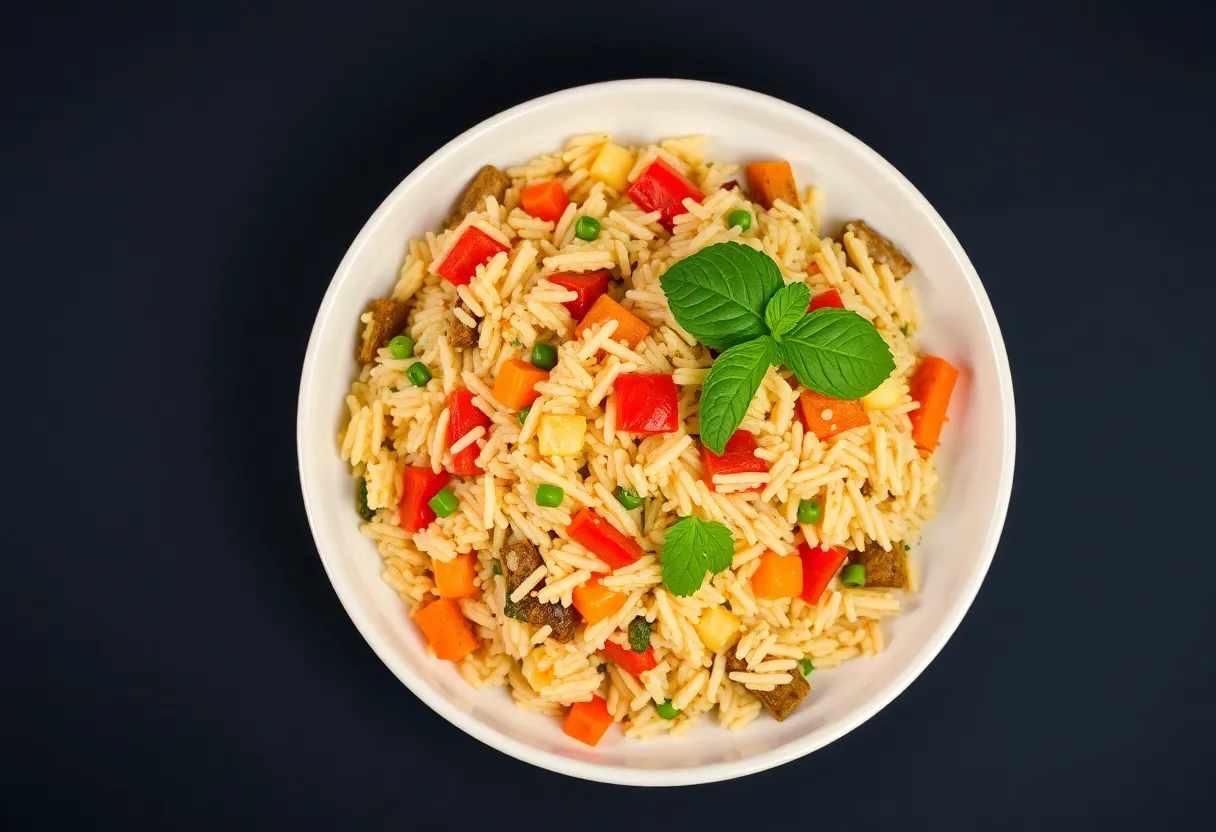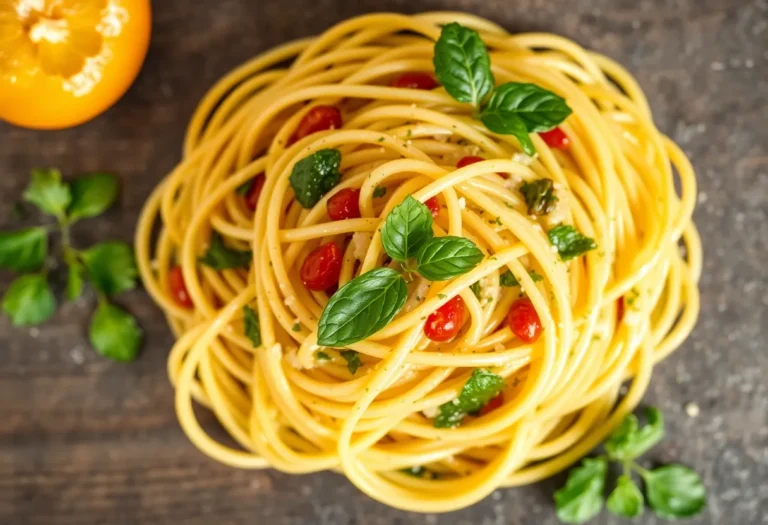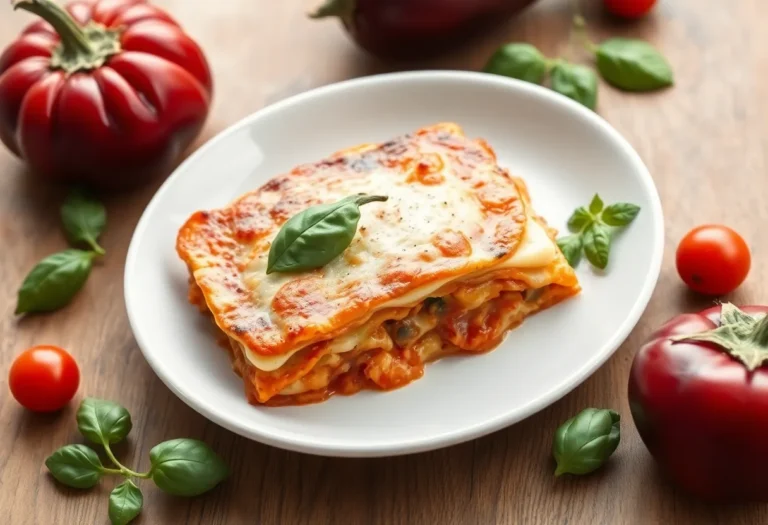Vegetable Biryani: The Flavor Bomb You Didn’t Know You Needed
Imagine a dish so packed with flavor that it makes your taste buds throw a party. Vegetable biryani isn’t just rice and veggies—it’s a symphony of spices, textures, and aromas that even meat lovers can’t ignore. Why settle for bland when you can have explosive?
This isn’t your average rice dish; it’s a one-way ticket to food heaven. And the best part? You don’t need a chef’s hat to make it.
Ready to level up your cooking game? Let’s go.
Quick Recomendation: Our blog is full of useful information to inspire you. If you are seeking a healthy way to prepare your meals, we recommend this Keto product
What Makes This Recipe So Good
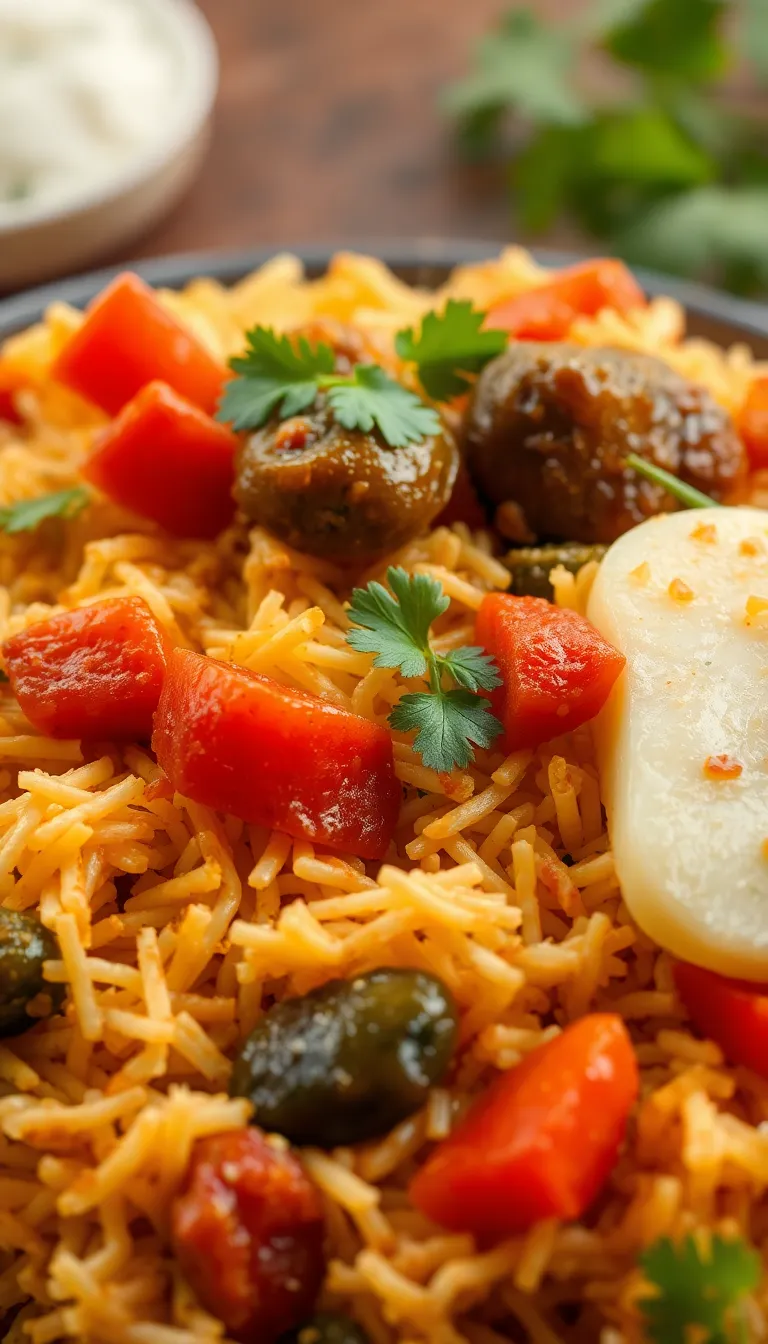
This vegetable biryani isn’t just good—it’s stupidly delicious. The secret?
Layers. Fragrant basmati rice, caramelized onions, tender veggies, and a spice mix that hits every note. The yogurt marinade keeps everything juicy, while the saffron or turmeric gives it that iconic golden hue.
And let’s not forget the crispy fried onions on top—because crunch is everything. It’s a complete meal in one pot, and it’s vegan (unless you drown it in ghee, which, honestly, no judgment).
Ingredients You’ll Need
- Basmati rice (1.5 cups, soaked for 30 mins)
- Mixed veggies (carrots, beans, peas, potatoes, cauliflower—whatever’s lurking in your fridge)
- Onions (2 large, thinly sliced—half for cooking, half for frying)
- Yogurt (½ cup, vegan if needed)
- Tomatoes (2, chopped)
- Ginger-garlic paste (1 tbsp, or crush your own if you’re fancy)
- Spices (cumin, coriander, turmeric, garam masala, bay leaf, cardamom, cinnamon, cloves)
- Saffron or turmeric (a pinch soaked in warm milk or water)
- Fresh cilantro and mint (because herbs make everything better)
- Oil or ghee (because flavor isn’t free)
Step-by-Step Instructions
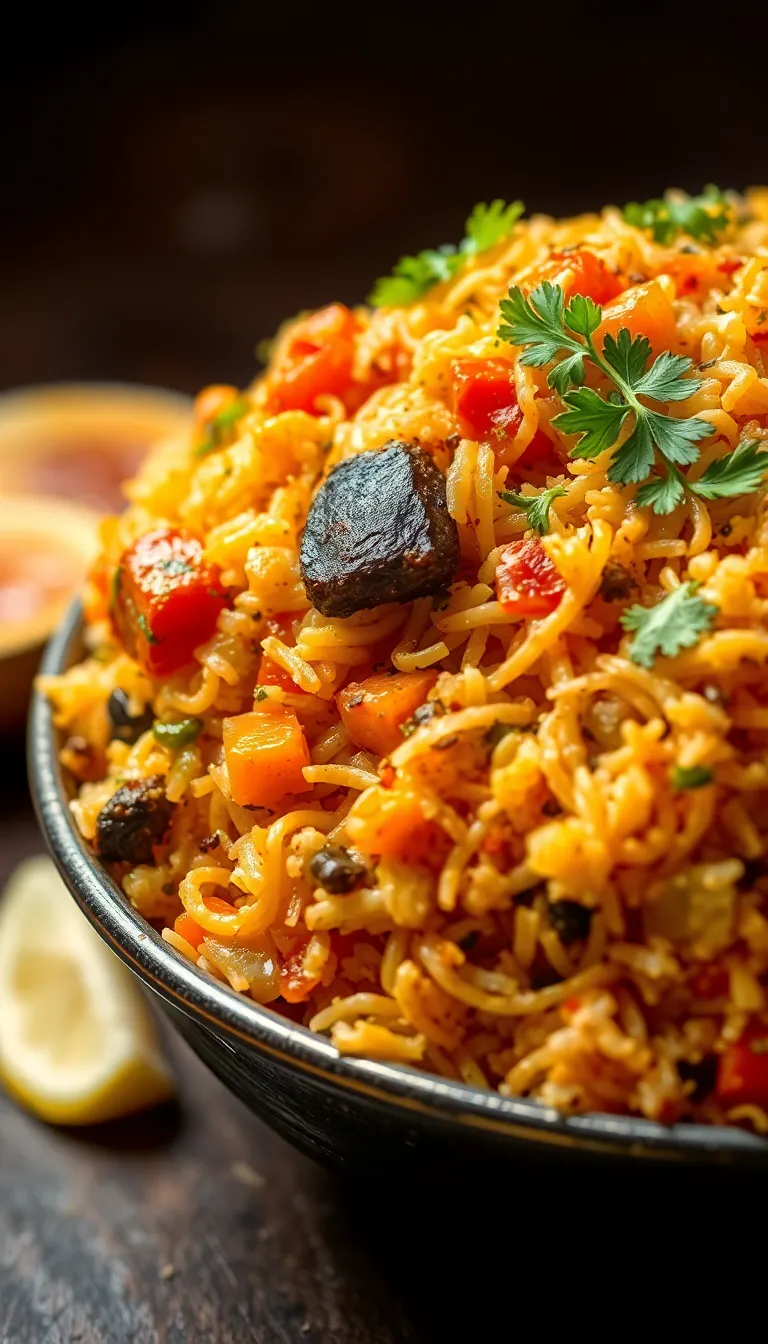
- Prep the rice: Soak basmati rice for 30 mins, then parboil with a bay leaf and salt. Drain and set aside.
- Fry the onions: Heat oil, fry half the onions until golden and crispy.
Remove and set aside for garnish.
- Sauté the aromatics: In the same oil, add the remaining onions, ginger-garlic paste, and whole spices. Cook until fragrant.
- Add veggies and marinade: Toss in the veggies, yogurt, and powdered spices. Cook for 5 mins until slightly tender.
- Layer it up: In a heavy pot, alternate layers of rice and veggie mix.
Top with saffron milk, fried onions, and herbs.
- Dum cook: Seal the pot with foil or a lid, cook on low heat for 20 mins. No peeking—patience is key.
- Fluff and serve: Gently mix the layers, garnish with more herbs and fried onions. Boom.
Done.
Storage Instructions
Got leftovers? (Unlikely, but okay.) Store in an airtight container in the fridge for up to 3 days. Reheat in the microwave with a splash of water to keep it moist. Freezing?
Sure, but the texture might suffer—rice can turn mushy. IMO, it’s best fresh.
Benefits of Vegetable Biryani
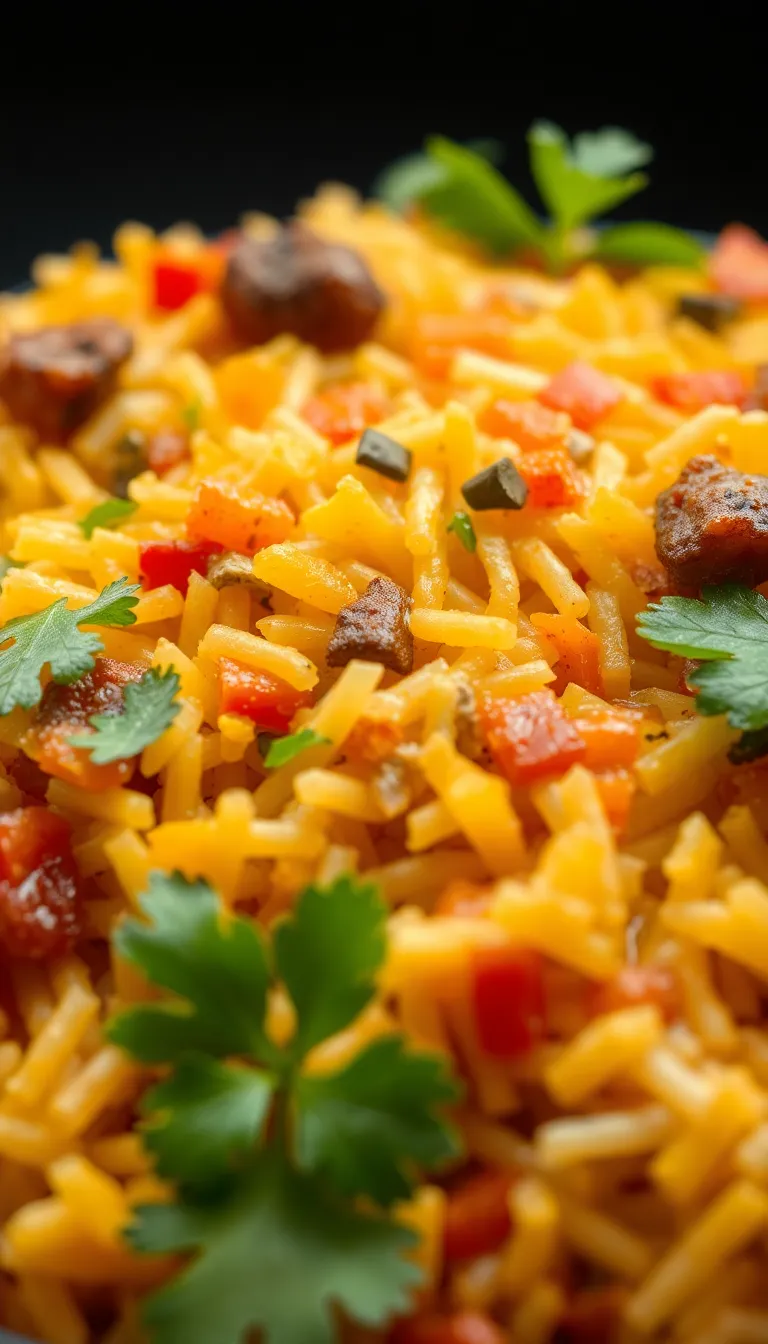
This dish isn’t just tasty—it’s a nutritional powerhouse. Packed with fiber from the veggies, protein from the yogurt, and antioxidants from the spices, it’s a guilt-free indulgence.
It’s also vegan-friendly (if you skip the ghee) and gluten-free. Plus, the spices boost digestion and immunity. So, you’re basically eating medicine.
Delicious, fragrant medicine.
Common Mistakes to Avoid
- Overcooking the rice: Mushy biryani is a crime. Parboil until it’s 70% done—it’ll finish cooking during dum.
- Skimping on spices: This isn’t the time to be shy. Layer flavors like your taste buds depend on it.
- Peeking during dum cooking: Steam is your friend.
Let it work its magic without interruption.
- Using soggy veggies: Nobody wants a watery biryani. Pat veggies dry or sauté them first.
Alternatives
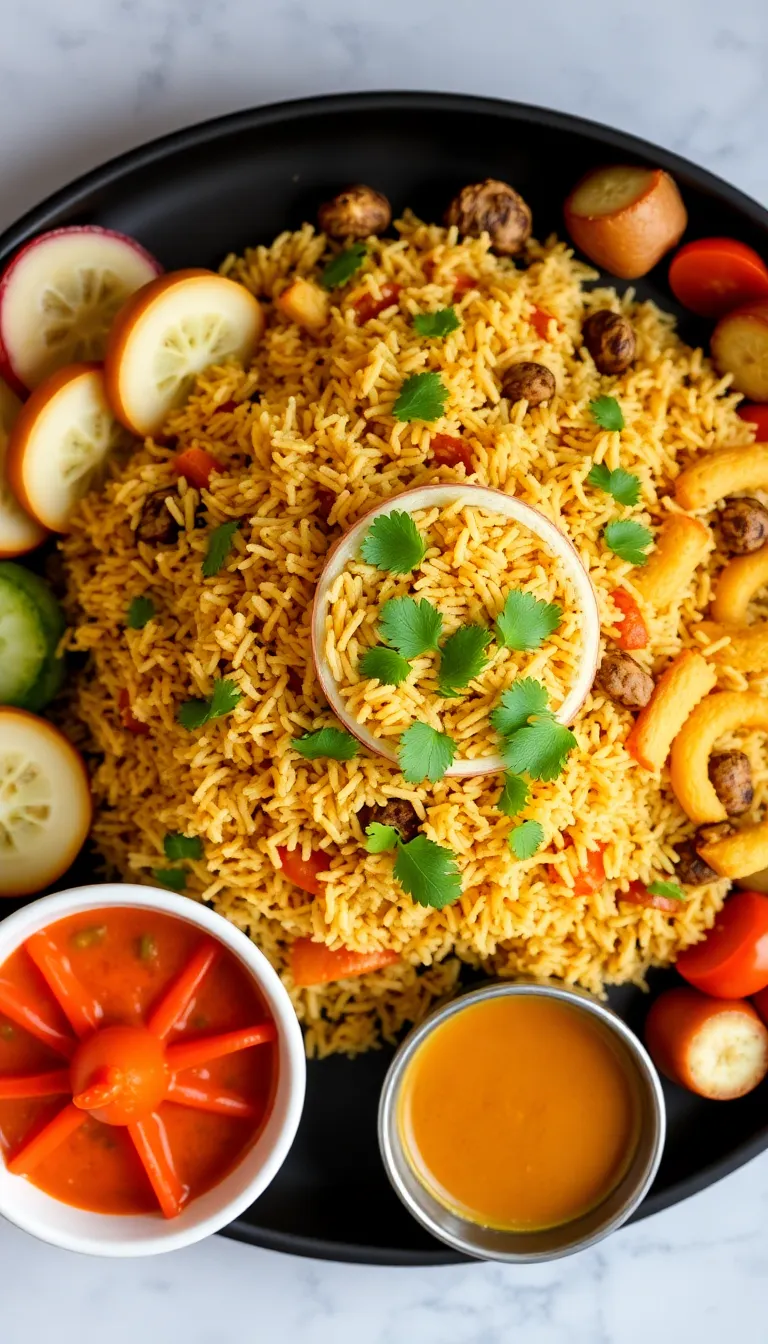
No basmati? Use jasmine or long-grain rice.
Out of yogurt? Coconut milk works for a creamy twist. Not a fan of frying?
Bake the biryani at 350°F for 30 mins. Want protein? Add paneer or tofu.
The world (or at least your kitchen) is your oyster.
FAQs
Can I make biryani without a heavy pot?
Yes, but a heavy pot distributes heat evenly. If you’re using a regular pot, keep the flame super low to avoid burning.
Why is my biryani dry?
You probably didn’t add enough liquid or overcooked it. Next time, add a bit more yogurt or water before sealing the pot.
Can I skip the saffron?
Sure, but your biryani will lack that golden glow.
Turmeric is a decent cheat, but it won’t taste the same. FYI, saffron is worth the splurge.
How do I know when the rice is parboiled?
Bite a grain. It should be firm in the center but soft on the outside.
Think al dente, but for rice.
Is biryani spicy?
It can be, but you control the heat. Adjust the chili powder or skip the green chilies if you’re spice-averse.
Final Thoughts
Vegetable biryani isn’t just food—it’s an experience. It’s the dish that turns weeknight dinners into celebrations and leftovers into treasures.
Whether you’re a spice fanatic or a flavor chaser, this recipe delivers. So, grab that pot, channel your inner chef, and make something unforgettable. Your taste buds will thank you. (And so will your Instagram followers.)
Quick Recomendation: Our blog is full of useful information to inspire you. If you are seeking a healthy way to prepare your meals, we recommend this Keto product
Printable Recipe Card
Want just the essential recipe details without scrolling through the article? Get our printable recipe card with just the ingredients and instructions.
